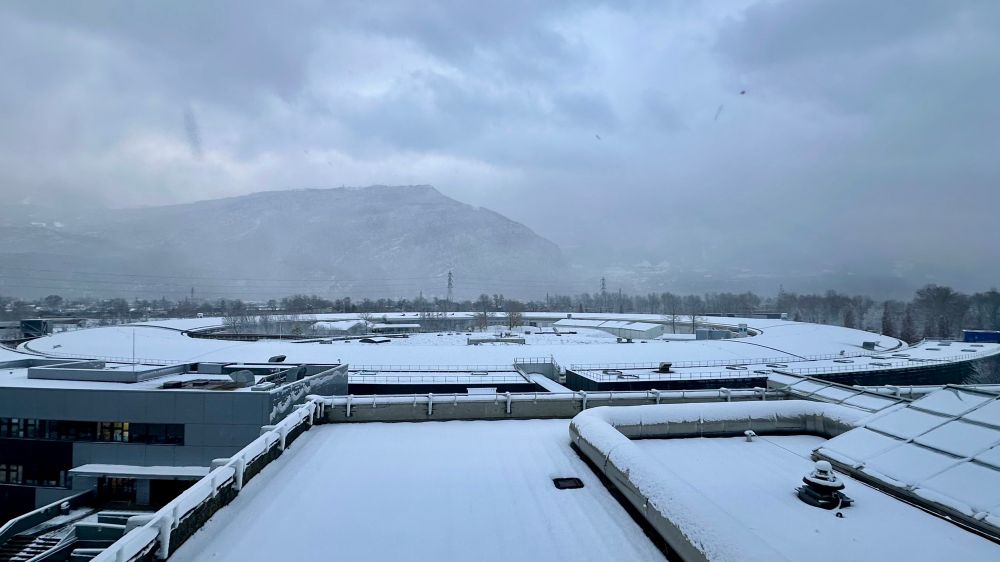
Apply now until 7 December!
www.esrf.fr/home/events/...

Apply now until 7 December!
www.esrf.fr/home/events/...
The results are out now in Communications materials.
www.esrf.fr/home/news/ge...

The results are out now in Communications materials.
www.esrf.fr/home/news/ge...
Www.esrf.fr

Www.esrf.fr
See you tomorrow for a #webinar with Jakub Drnec, ESRF scientist
www.esrf.fr/home/events/...

See you tomorrow for a #webinar with Jakub Drnec, ESRF scientist
www.esrf.fr/home/events/...
The ESRF Geosciences team is launching a new series of webinars
Join us on Friday 21 November at 4.15 pm CET for the first webinar.
Check out our website for more info
www.esrf.fr/sites/www/ho...

The ESRF Geosciences team is launching a new series of webinars
Join us on Friday 21 November at 4.15 pm CET for the first webinar.
Check out our website for more info
www.esrf.fr/sites/www/ho...
The results are out in Nature Communications
www.esrf.fr/home/news/ge...

The results are out in Nature Communications
www.esrf.fr/home/news/ge...
www.esrf.fr/home/news/ge...


www.esrf.fr/home/news/ge...
The ESRF User Organisation invites nominations for the 2026 Young Scientist Award.
If you know an outstanding young scientist who deserves recognition for her/his work at the ESRF — now is the time!
Deadline: 4 November 2025
More information: lnkd.in/dxjn8qqY

The ESRF User Organisation invites nominations for the 2026 Young Scientist Award.
If you know an outstanding young scientist who deserves recognition for her/his work at the ESRF — now is the time!
Deadline: 4 November 2025
More information: lnkd.in/dxjn8qqY
Among them is Prof. Yaghi, with whom the ESRF proudly collaborated on a study featured as an ESRF Highlight in 2023 on high-porosity #MOF glasses.

Among them is Prof. Yaghi, with whom the ESRF proudly collaborated on a study featured as an ESRF Highlight in 2023 on high-porosity #MOF glasses.
They used the ESRF to test scaffold's biomimetic deformation under tensile load.
www.esrf.fr/home/news/ge...

They used the ESRF to test scaffold's biomimetic deformation under tensile load.
www.esrf.fr/home/news/ge...
The team led by #amnh @NtlMuseumsScot used the ESRF’s ID19 beamline to scan the tiny fossil fragments. The results are out now in @natureportfolio.nature.com
www.esrf.fr/home/news/ge...

The team led by #amnh @NtlMuseumsScot used the ESRF’s ID19 beamline to scan the tiny fossil fragments. The results are out now in @natureportfolio.nature.com
www.esrf.fr/home/news/ge...
The results are out in Nature Communications.
www.esrf.fr/home/news/ge...

The results are out in Nature Communications.
www.esrf.fr/home/news/ge...
www.esrf.fr/home/news/ge...

www.esrf.fr/home/news/ge...
www.esrf.fr/home/news/ge...

www.esrf.fr/home/news/ge...
A new fossil reveals what the oldest members of the lizard group looked like, and there are some surprises, according to a research team led by @bristolunilib.bsky.social with @esrf.fr
In @natureportfolio.nature.com
www.esrf.fr/home/news/ge...

A new fossil reveals what the oldest members of the lizard group looked like, and there are some surprises, according to a research team led by @bristolunilib.bsky.social with @esrf.fr
In @natureportfolio.nature.com
www.esrf.fr/home/news/ge...

It is back to school in most of Europe, and at the ESRF, we are proud of welcoming youngsters in the framework of our different educational programmes
#backtoschool #physics #scienceforsociety


It is back to school in most of Europe, and at the ESRF, we are proud of welcoming youngsters in the framework of our different educational programmes
#backtoschool #physics #scienceforsociety
On 25 August 2025, the ESRF marks five years since the Extremely Brilliant Source (ESRF-EBS), a revolutionary new high-energy synchrotron, began operation: 5 years of science.
www.esrf.fr/home/news/ge...
On 25 August 2025, the ESRF marks five years since the Extremely Brilliant Source (ESRF-EBS), a revolutionary new high-energy synchrotron, began operation: 5 years of science.
www.esrf.fr/home/news/ge...
The results are published in @science.org
▶️ www.esrf.fr/home/news/ge...

The results are published in @science.org
▶️ www.esrf.fr/home/news/ge...
A new species of early reptile from the Triassic has been discovered, with unique structures growing from its skin that formed an alternative to feathers.
This ‘wonder‘ fossil changes our understanding of reptile evolution.
In @natureportfolio.nature.com by
@stephanspiekman.bsky.social

A new species of early reptile from the Triassic has been discovered, with unique structures growing from its skin that formed an alternative to feathers.
This ‘wonder‘ fossil changes our understanding of reptile evolution.
In @natureportfolio.nature.com by
@stephanspiekman.bsky.social
A study using crystallography and small-angle X-ray scattering shows that making antibodies more rigid through disulfide engineering can help improve how they activate immune receptors like CD40 & 4-1BB.
www.esrf.fr/home/news/sp...

A study using crystallography and small-angle X-ray scattering shows that making antibodies more rigid through disulfide engineering can help improve how they activate immune receptors like CD40 & 4-1BB.
www.esrf.fr/home/news/sp...





